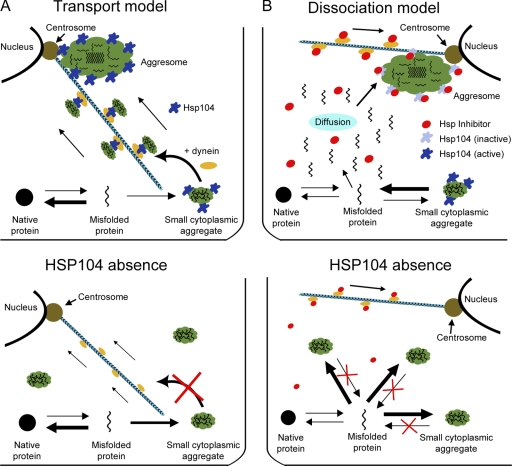Figure 2.
Two models for the formation of aggresomes. (A, top) In the transport model, small cytoplasmic aggregates are formed throughout the cell and accumulate the chaperone protein Hsp104. The association with Hsp104 is required for the loading of the small aggregates onto microtubules and their transport to the centrosome in a dynein-dependent manner. At this location, the small aggregates merge with the aggresome. In this model, Hsp104 is active everywhere. (B, top) In the dissociation/condensation model, Hsp104 activity is high throughout the cytoplasm and on the small aggregates formed, whereas it is low on the aggresome. Therefore, the small aggregates rapidly release their material for incorporation in the aggresome. In this model, microtubules may mediate the transport of an Hsp104 inhibitor to the centrosome to allow aggresome condensation at this place. (A and B, bottom illustrations) Predictions for the effects of Hsp104 inhibiting in each model. Inhibition of Hsp104 leads to formation of smaller aggregates throughout the cytoplasm. In the transport model (A, bottom), this is because of the fact that they are no longer transported to the centrosome. In the dissociation model (B, bottom), condensation occurs throughout the cytoplasm.

